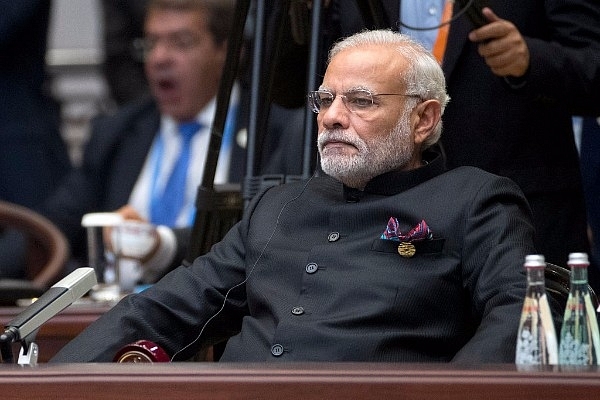
Why Modi Needs To Think Of ‘Big Ideas’ To Drive Important Change In India
India is desperately in need of Big Ideas, especially in the areas of healthcare, education and energy.
Prime Minister Modi should focus on ideating in key areas, as that will benefit the country significantly, besides proving legacy-defining for him personally.
“Structure follows strategy,” proposed the legendary business historian and professor, Alfred Chandler. He argued that the corporate structure of any organisation was the outcome of strategy and not vice versa.
A strategy involves an investment of resources over a long period of time, but the underlying layer of any strategic thought is a Big Idea. The relative ‘bigness’ of an idea can be argued, but, by and large, it infers a larger envelope which defines the structure and overall paradigm of the organisation.
An organisation also needs smaller ideas, which essentially form the tactical and operational nature for execution.
Prime Minister Narendra Modi’s regime so far has involved a set of incremental tactical ideas which, no doubt, have been great, but have not been big enough to define the kind of structural change that India desperately needs. Whether it is the repealing of old laws or bringing about an operational efficiency in ministries, the changes have been important but not ‘legacy-defining’.
With a mandate supported by 282+ seats in Parliament and a naturally decisive leadership style, it would be a wasted opportunity if Modi did not seize the day and define the big ideas as soon as possible.
How Big Ideas have defined American Presidential terms
Abraham Lincoln once famously said, “Every man is said to have his peculiar ambition. Whether it be true or not, I can say for one that I have no other so great as that of being truly esteemed of my fellow men, by rendering myself worthy of their esteem. How far I shall succeed in gratifying this ambition, is yet to be developed.”
American Presidents have often been judged by the big ideas they tried to implement during their terms. These ideas could be controversial and heavily contested, but the bigness of the ideas was essential.
For instance, as Obama completes his last term, he will be known, by and large, for bringing in three major ideas to the table.
The first is ‘Obamacare’, or the ‘The Affordable Care Act’, which essentially enabled “more Americans access to affordable, quality health insurance and to reduce the growth in US health care spending”. The significance of this measure is reflected by the fact that the entire set of Republican Primary candidates and the current nominee, Donald Trump, have vowed to repeal it upon taking office. Even the economics of this act has been widely debated, like the recent move of Aetna, one of the largest insurance providers, questioning its continuance in the programme. But the big idea remains, which is to bring more people under the health insurance net.
Obama’s second big idea was “non-interventionist foreign policy”, as against the traditional “international policeman” idea that the United States followed over the years. This is combined with a reconciliatory approach with historical enemies. Striking the Iran nuclear deal, warming up to Cuba and, most importantly, the delayed intervention in Syria and non-intervention in the Maliki regime of Iraq are the prime outcomes of this big idea.
The third is energy. The US is now a big energy producer, with alternate energy revolution also underway.
Again, each of these ideas has been dissected threadbare, and Trumpism is, in fact, regimented on a ‘Not Obama’ philosophy. How much Trump can undo is a matter of question, but the success of any Presidency is proportional to the bigness of the ideas that the leader incubates and defines a structure around.
The scope for Modi to implement big ideas
Prime Minister Modi has to unlearn the tactical form of governance and leave the operational decisions to his team. At the moment, India is ready to wait to see the fruits of big ideas, but cannot wait for an indefinite delay in coming up with ideas itself.
Education, healthcare and energy are the three main areas where India needs big ideas from Modi. Brookings Institution states: “India is among the top five nations for out-of-school children of primary school age, with 1.4 million 6-to-11-year-olds not attending school. In many ways schools are not equipped to handle the full population – there is a teacher shortage of 6,89,000 teachers in primary schools, only 53 percent of schools have functional girls’ toilets and 74 percent have access to drinking water.”
The situation is equally worse in healthcare. According to a Deloitte Report “India’s ratio of 0.7 doctors and 1.5 nurses per 1,000 people is dramatically lower than the WHO average of 2.5 doctors and nurses per 1,000 people.”
Minister of State Piyush Goyal is doing a great job in the energy sector, but consider this, as per MIT: “70 percent of India’s electricity today comes from coal-fired plants.” In spite of Modi-Goyal’s aggressive push to low-carbon emitting and renewable sources, “bloody coal will still be at 50 percent” in India by 2040. Not only with respect to the cost factor but India will also become more isolated in the green regime in the years to come vis-a-vis its emission. What is the equivalent of the Shale Gas idea in India?
Modi will definitely have to deal with a hostile press and a united set of political opponents to any big idea he might propose, but time will be to his advantage if the ideas are truly game changers.
Appearing on Fareed Zakaria GPS on CNN, journalist, author and speaker Malcolm Gladwell said that the chances of electing a second black president in the US are very low. What he was saying was that since the US had experimented with a ‘different and black leader’, it was about time before another black leader would be elected.
By that logic, India has three more years.